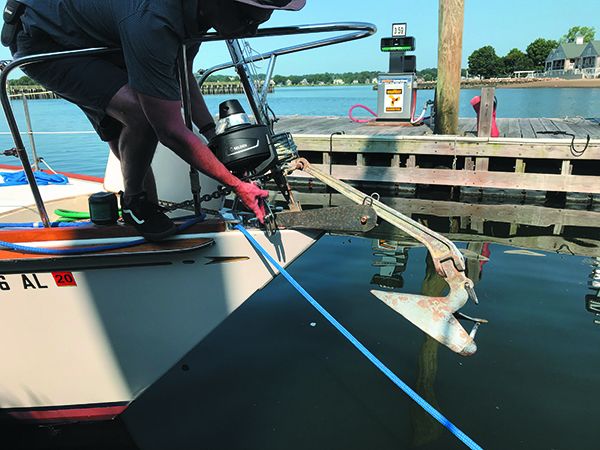Over the years, Practical Sailor testers have dug into the topic of roller furling gear—one of the most popular upgrades on an older boat. The article, “Genoa Furler Refit: A Semi-DIY Project,” documents the installation process on a Bristol 35.5 First Light, our New England-based test boat. During the process, the manufacturer provided plenty of guidance, and reiterated important advice: If you have to use a winch on your furling gear, beware. There is a good chance something is wrong with the furler. And if you have to really crank down on the winch, there is a good chance that things will get worse.
Headsail furling on sailboats 40 feet and under should be able to be accomplished with a hand-over-hand pull on the furling line. If a large genoa is set and the breeze fills in abruptly, it may take a little coaxing with a winch to get things going, but when its a fairly light wind day, and you need to start cranking away on a primary winch to instigate the furl, something is wrong with the system.
We have seen foils barber pole, or twist, due to excess tension on the furling line. Such scenarios usually involve torque applied at the drum and an upper swivel that refuses to turn. Bearing failure in the upper swivel is often the cause.
Systems with halyard blocks attached at the top-foil, which do not rely on upper swivels, never face this problem. But this style of furler is usually only used on boats 35 feet or shorter, and they have other sources of friction.
One of the easiest ways to improve the furling efficiency of all types of furlers is tackle the line-lead challenge. It starts with the angle that line leads on and off the drum, progresses into a sweeping arc as the line makes its way to the cockpit and ends with another change in direction that leads the line to the hands of a crew member or a winch drum.
All deflection away from a straight run creates friction, and the goal is to keep the accumulation of this parasitic load as low as possible. We noted that among the 20 furling-line fair leads we tested, none utilized metal ball bearings. (Look for the full report in the October issue.) High molecular weight plastics have taken over and they should get some occasional wash-downs to clear grit and salt from the exposed bearing races.
When it comes to cutters and double headsail sloops, or the addition of an endless line furler, we prefer to lead furling lines to opposite sides of the boat. This tends to make line-handling more straightforward, although it does increase hardware needs.
For more on the topic of furlers, check out the following reports.
Refining Furling Line Fairleads
These and other topics are covered in our 4-volume ebook Practical Sailor’s Complete Look at Sails, available in our online bookstore, where all sales help support our testing program.




































